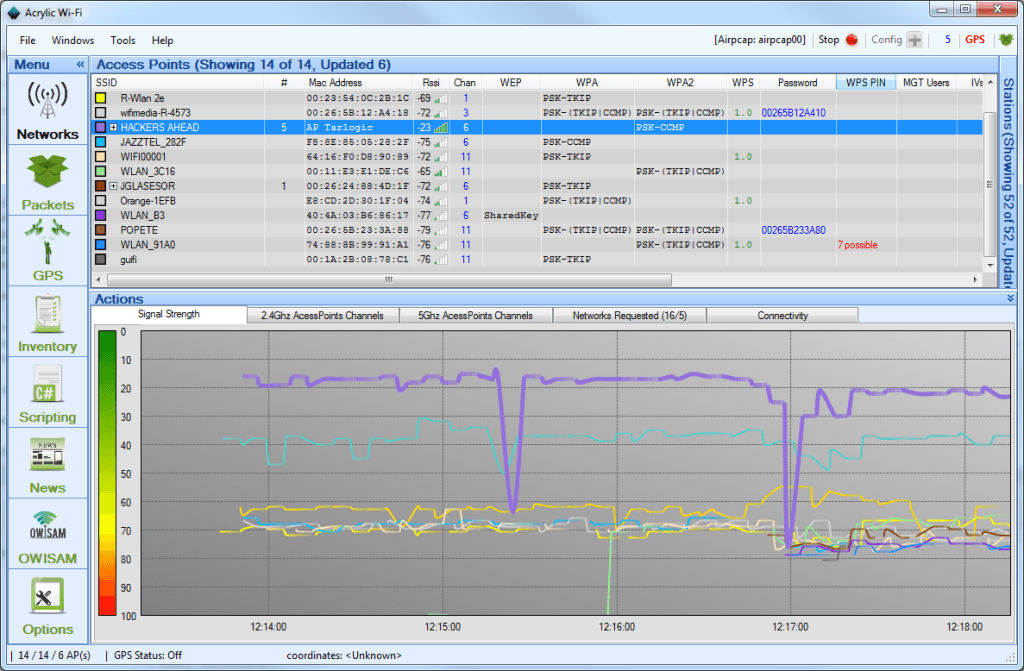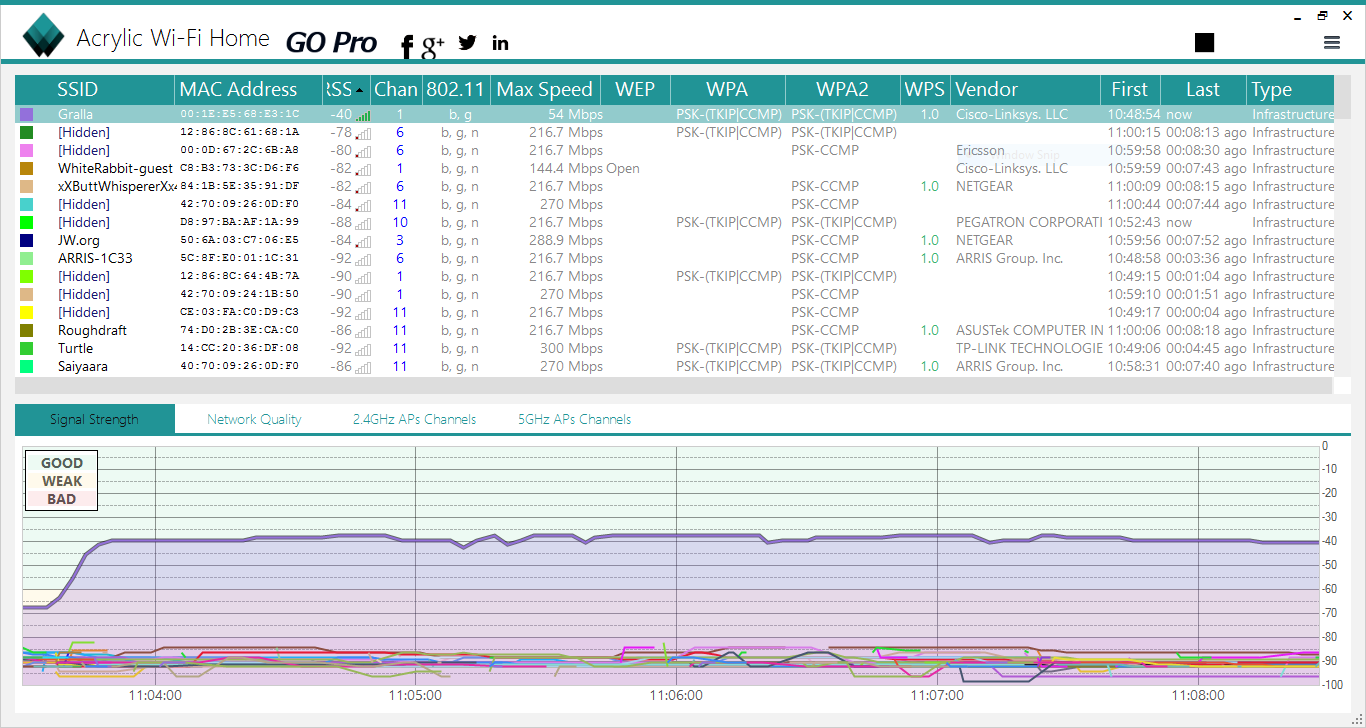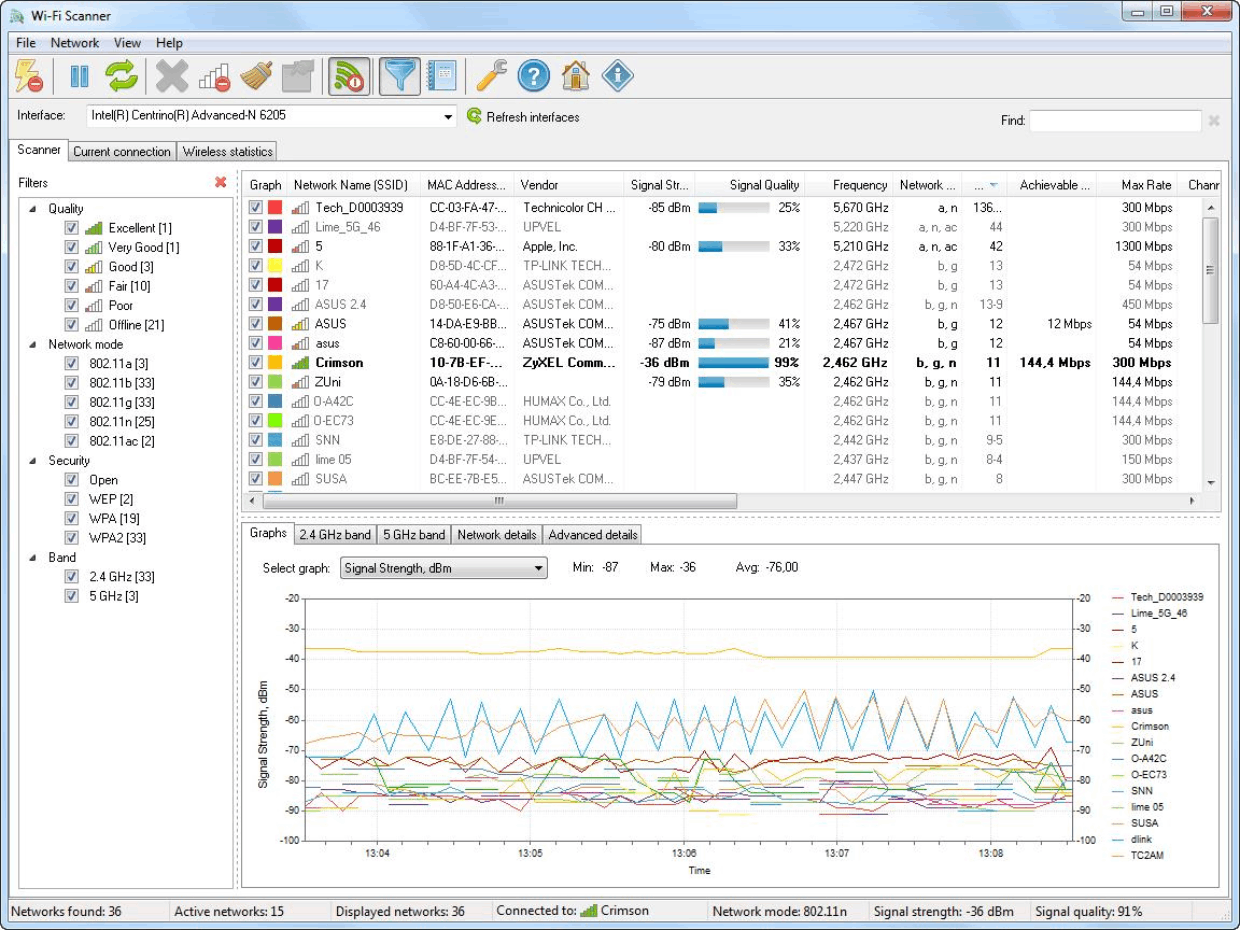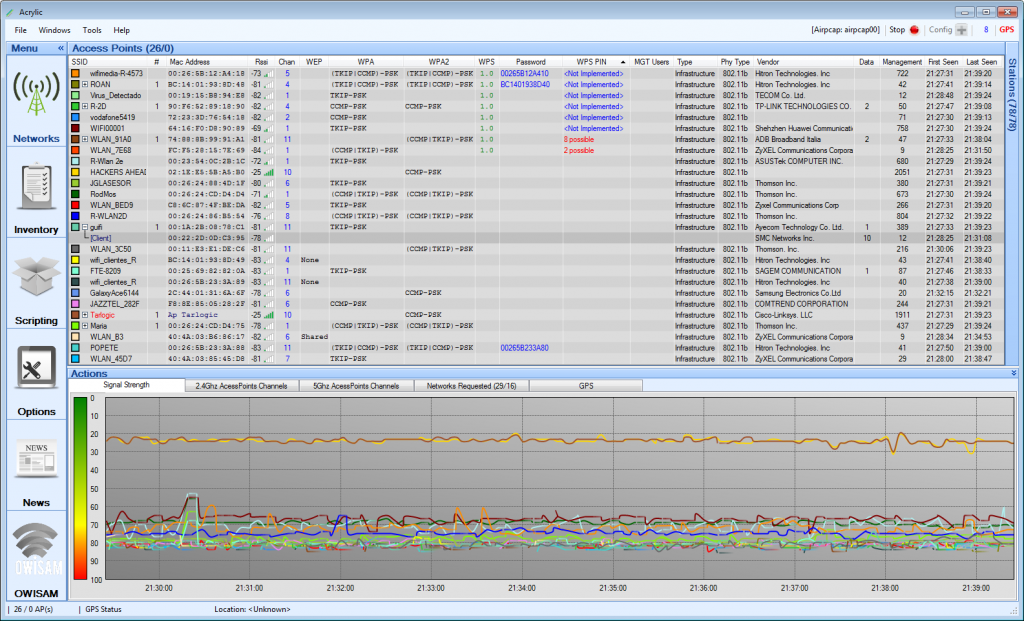

Though a bit hidden, there’s an advanced mode that displays two additional graphs, one for 2.4GHz and one for 5GHz.

The free edition has a five-entry limit.īy default, the bottom portion of the application shows the network ratings of the selected SSID, and one graph showing each SSID’s signal strength. The application has an inventory feature to assign and save names of detected SSIDs and/or clients. It does not reveal the actual hidden SSIDs, but does show the other network details of hidden SSIDs. It shows negative dBm values for RSSI, can name the 802.11 standard (including 802.11ac), recognizes larger bandwidths and displays the multiple channels that are utilized. You always see the list of SSIDs and their details on the top portion of the application. The free edition has a simple but attractive GUI. The 3.1 version looked at here offers some great wireless details and graphs. Tarlogic Security offers Acrylic Wi-Fi Home, a Wi-Fi stumbler that is a scaled down version of their commercial offering. Most of these tools are the free versions of for-pay tools made by the same vendors, and lack some of the features included in the commercial versions. One of them includes Wi-Fi password-cracking tools that are useful for educational or penetration testing purposes.


Some can even reveal “hidden” or non-broadcasted SSIDs, display the noise levels, or display statistics on successful and failed packets of your wireless connection. Here is a look at eight free tools – some for Windows and some for Mac OS X – that provide basic details about nearby Wi-Fi signals: SSIDs, signal strength, channels, MAC addresses and security status. There is enterprise-level software for surveying Wi-Fi networks, but even in large wireless networks, simple freeware tools are handy for a quick peek at the airwaves during design, deployment or troubleshooting.


 0 kommentar(er)
0 kommentar(er)
